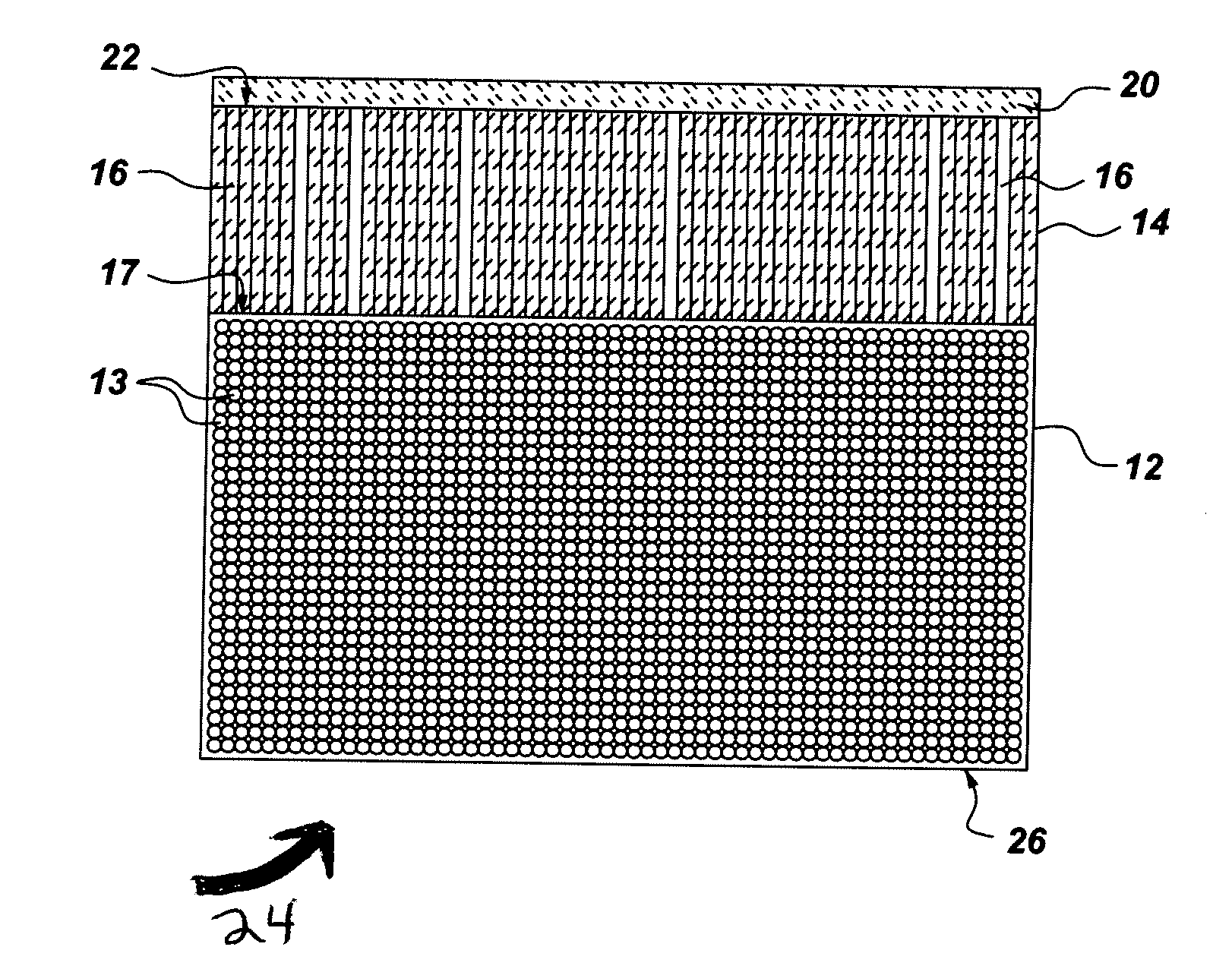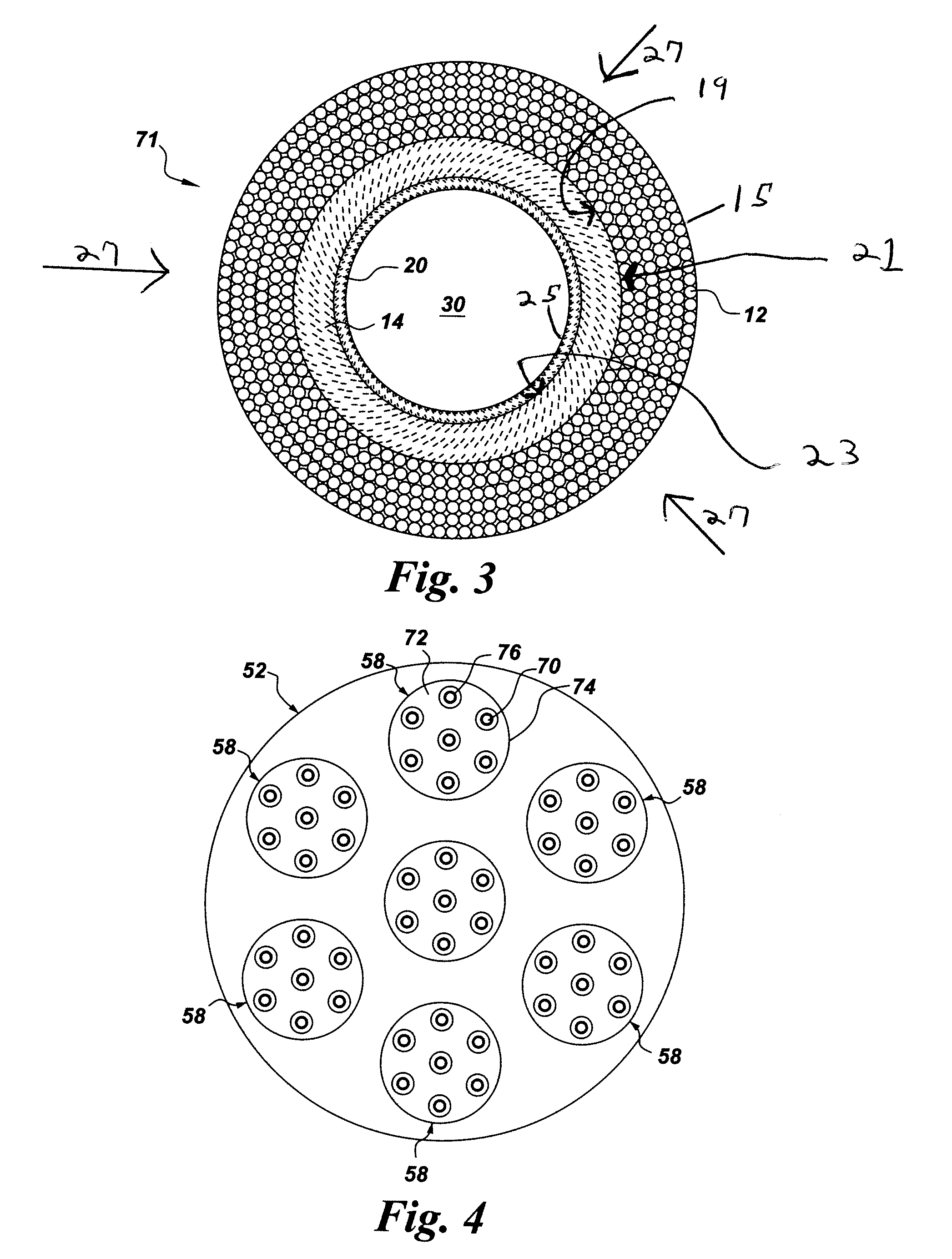Membranes suitable for gas separation, and related articles and processes
a technology of membranes and gas separation, applied in the field of membranes, can solve the problems of intolerant metals in such membranes, difficult formation of microporous membranes with fine pores, and high flux characteristics (i.e., flow capacity) and other problems, to achieve the effect of improving hydrogen selectivity
- Summary
- Abstract
- Description
- Claims
- Application Information
AI Technical Summary
Benefits of technology
Problems solved by technology
Method used
Image
Examples
examples
The examples presented below are intended to be merely illustrative, and should not be construed to be any sort of limitation on the scope of the claimed invention.
Porous alumina substrates, ⅜ inch (0.95 cm) in diameter, were fabricated by tape-casting alumina slurry, followed by drying, punching and sintering. One surface of each substrate was coated with aluminum, using physical vapor deposition, to obtain an aluminum film about 1 micron in thickness. Copper tape with a conductive adhesive was carefully applied to an edge of the sample in order to make electrical contact with the aluminum metal.
The button sample was then anodized in 0.3M oxalic acid. The cathode or counter-electrode was platinum mesh. The anodization voltage was varied between 15 V and 2 V. Conversion of aluminum to porous aluminum oxide took place through the porous support, resulting in the formation of an interfacial layer of AAO (anodized aluminum oxide). The surface of the aluminum was not substantially anodi...
PUM
 Login to View More
Login to View More Abstract
Description
Claims
Application Information
 Login to View More
Login to View More - R&D
- Intellectual Property
- Life Sciences
- Materials
- Tech Scout
- Unparalleled Data Quality
- Higher Quality Content
- 60% Fewer Hallucinations
Browse by: Latest US Patents, China's latest patents, Technical Efficacy Thesaurus, Application Domain, Technology Topic, Popular Technical Reports.
© 2025 PatSnap. All rights reserved.Legal|Privacy policy|Modern Slavery Act Transparency Statement|Sitemap|About US| Contact US: help@patsnap.com



